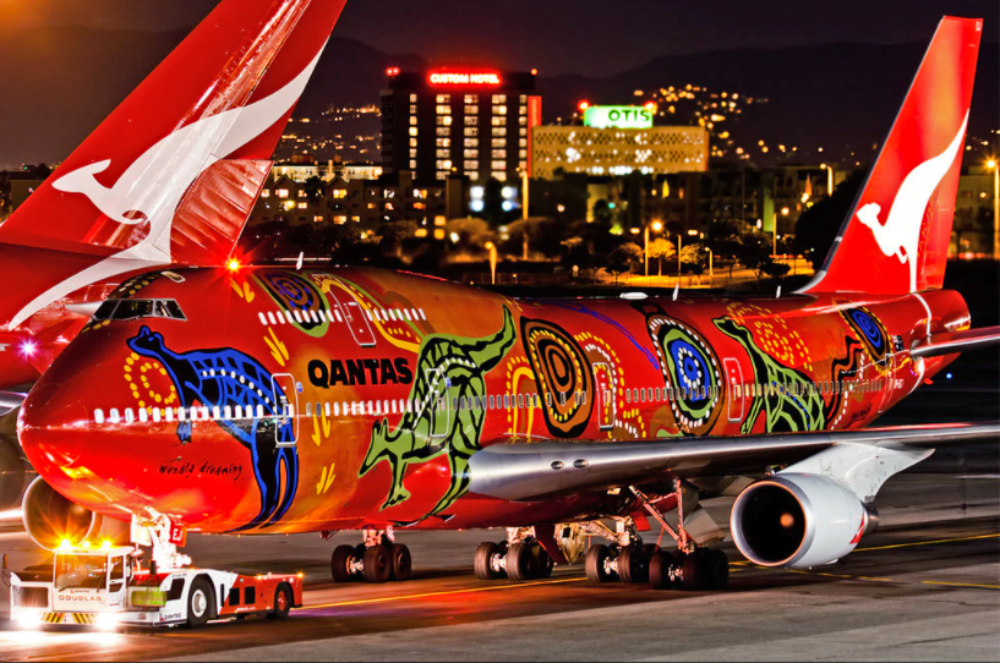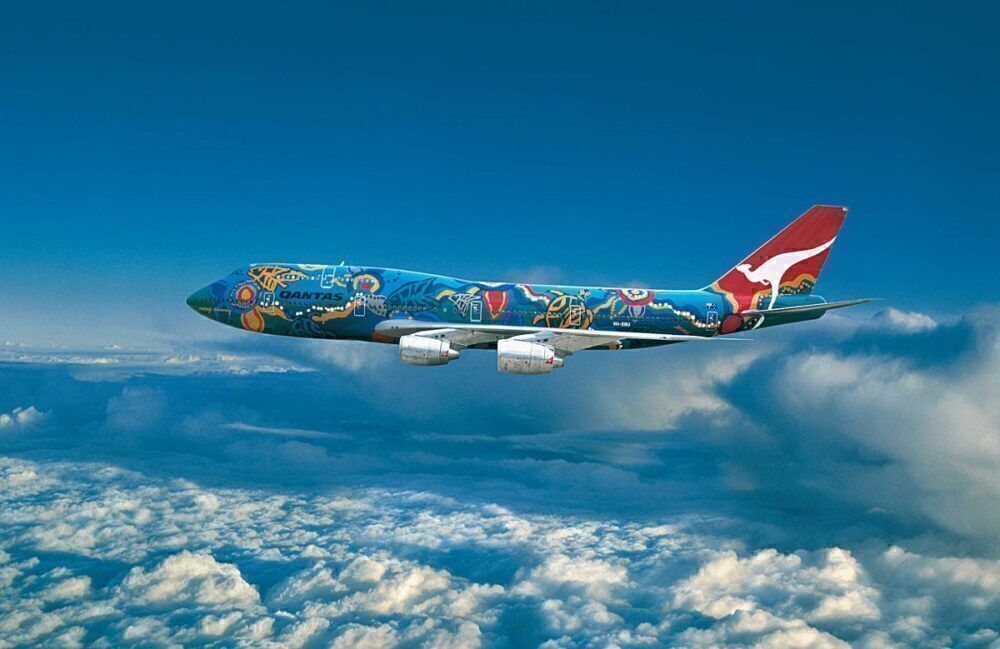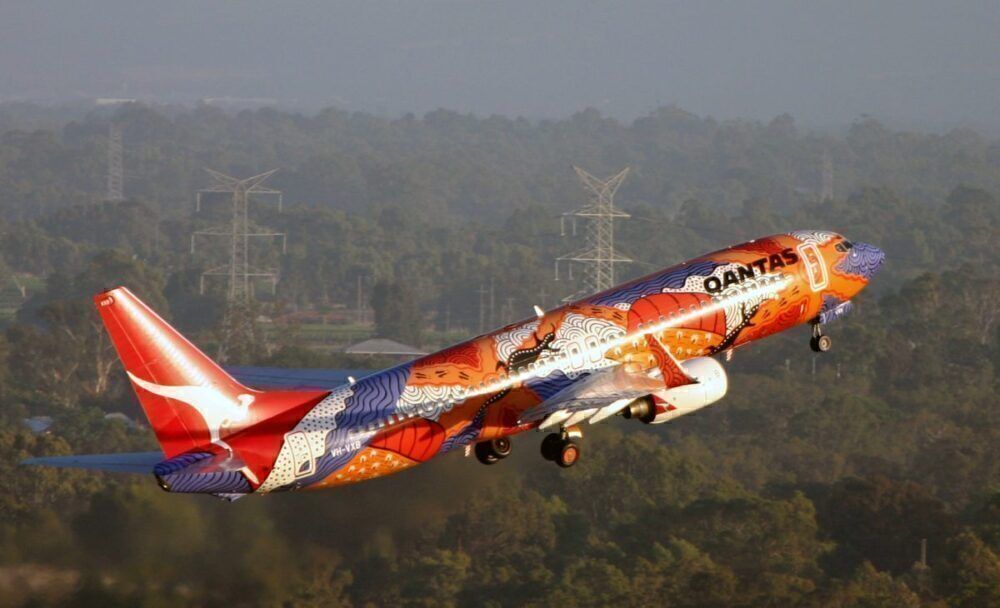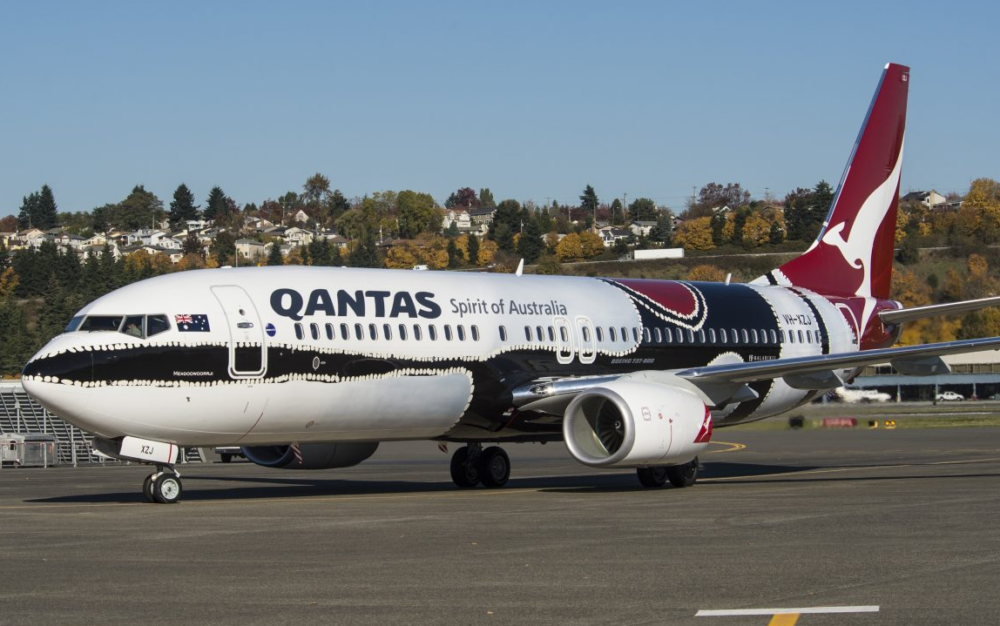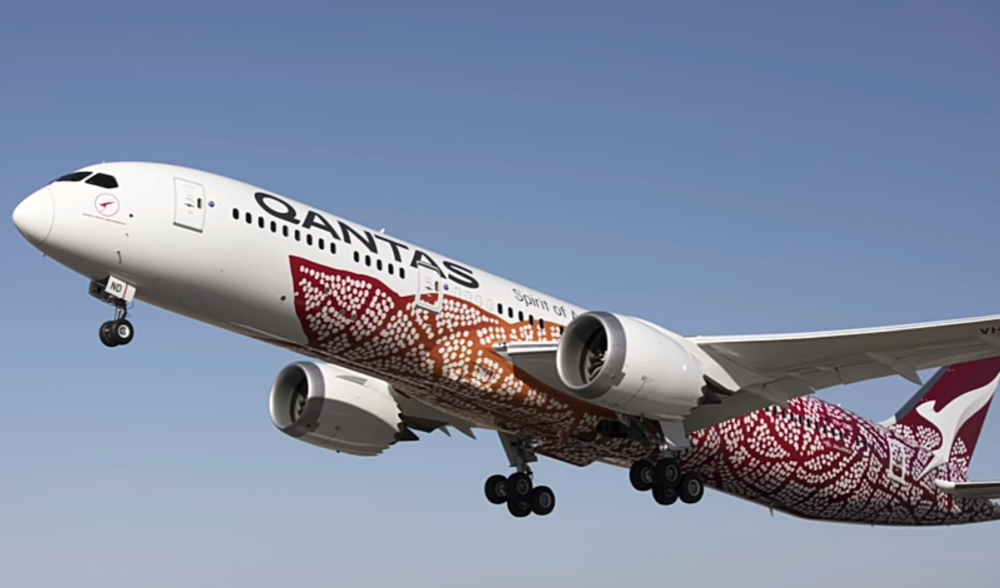Since the mid-1990s, Qantas has emblazoned some of its planes with designs from Aboriginal and Torres Strait Islander culture. Much of the art is highly colorful. All of it is eye-catching. In total, five planes have or still feature indigenous liveries. For Qantas, it is a way of promoting the airline as well as supporting and paying tribute to Australia's original peoples - Aboriginal and Torres Strait Islanders.
It started with a 747-300 called Nalanji Dreaming
The first two planes to get the Aboriginal and Torres Strait Islander liveries were now-defunct Boeing 747s. The first was VH-EBU, that distinctive Boeing 747-300 painted in the blue Nalanji Dreaming colors between 1995 and 2005. 'Nalanji' is a Yanyuwa word meaning 'our place'. The blue-based artwork reflects the color palette of tropical Australia. The design also helped celebrate Qantas' 75th birthday in 1995.
Arguably even more eye-catching was Wunula Dreaming. The Boeing 747-400 registered as VH-OEJ featured brilliant ochre artwork between 2003 and 2011. The Wunala Dreaming story also comes from the Yanyuwa people who live near the Gulf of Carpentaria. That story is thousands of years old.
Creating the art for VH-OEJ was a more contemporary process. Qantas says the original art was digitized on a computer and magnified at 100 times to generate two kilometers of blotting paper. The 67 patterns, including 1,324 irregular dots, were then traced onto the plane.
Two Boeing 737-800s get an indigenous art makeover
It's not just planes from the international Qantas fleet that got an indigenous art makeover. Two Boeing 737-800s also got the treatment. Between 2002 and 2014, it was hard to miss Yananyi Dreaming. The 737-800, registered as VH-VXB, reflected the colors around Uluru in Central Australia and was based on motifs painted by Central Australian artist Rene Kulitja.
Rene Kulitja is an Pitjantjatjara woman. Her people have lived in the Central Australia region for more than 40,000 years. 'Yananyi' means going or traveling. In Yananyi Dreaming, radiating pathways lead to the symbol of Uluru, depicted both as a physical form surrounded by kurkara (desert oak trees) and as an abstract representation of concentric circles.
"This is my traditional place," Rene Kulitja said. "My pictures tell about the landscape, the animals, and the plants of Uluru."
More recently, another Boeing 737-800, VH-XZJ, featured livery inspired by the work of late West Australian Aboriginal painter Paddy Bedford. The plane was called Mendoowoorrji. Paddy Bedford's mother came from country called Mendoowoorrji.
Mr Bedford didn't start painting until he was in his 70s. Before that, he worked as a stockman around Western Australia. Despite being a later bloomer, art-wise, Paddy Bedford is considered the Warmun art movement's father.
VH-XZJ features Mr Bedford's art. Unlike the earlier planes featuring indigenous livery, the colors here were less bright, but nonetheless very striking.
Stay informed: Sign up for our daily and weekly aviation news digests!
Now a 787-9 called Emily Kame Kngwarreye flies the indigenous art flag
There's just one aircraft in the Qantas fleet featuring indigenous livery now. Along with Qantas' other flagship 787-9 Dreamliner decked out in centenary livery, VH-ZND, Emily Kame Kngwarreye, is hard to miss.
The inestimable Emily Kame Kngwarreye is one of Australia's greatest Aboriginal artists. Her work hangs in galleries around the world. She was an Anmatyerre woman from Utopia, several hundred kilometers northeast of Alice Springs. Qantas describes her as "a senior member of the Anmatyerre clan, ceremonial leader and a custodian of Dreaming sites in Alhalkere."
VH-ZND only started flying for Qantas in 2018. The livery was inspired by Emily Kame Kngwarreye's 1991 artwork ‘Yam Dreaming.’
When the aircraft first rolled out in early in 2018, Qantas Group CEO Alan Joyce said;
“It’s a beautiful, bold artwork, and so we hope it catches people’s eye and sparks a conversation about our country’s dynamic Indigenous culture.”
Commissioning the artwork designs via the long-established indigenous-owned design agency, Balarinji, Qantas says it is proud to promote indigenous art and artists. They see it as a way to empower and promote Australia's original peoples. Mr Joyce says their program of featuring indigenous art on planes is part of Qantas' ongoing commitment to reconciliation with Aboriginal and Torres Strait Islander people.
Do you have a favorite Qantas plane featuring indigenous livery? Post a comment and let us know.

